🇩🇪 german version >>
quantum computer
The quantum maze
How do quantum computers work and what are gates and QuBits all about? Play the game quantum maze and find out!
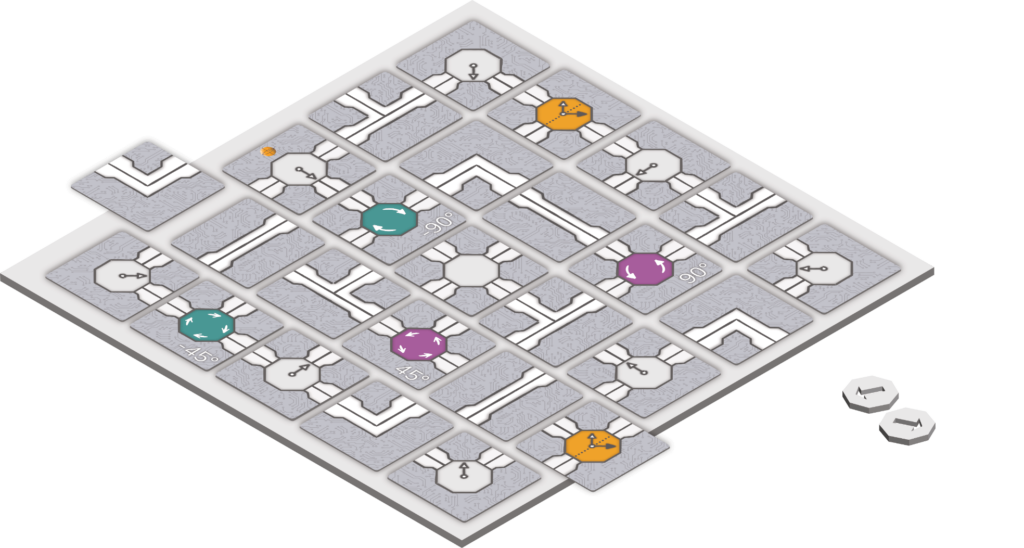
Normal computers work with logic gates. Quantum computers work in a similar way, but they function by quantum gates, because QuBits (quantum bits) are used here. The goal is to build your quantum maze in a way that you can reach the right gates with your QuBits. After all, you can only score points if your QuBit has been rotated and mirrored through the correct gates before it arrives at the target state. But it’s best to try out the game for yourself!
Get to know everything about the quantum maze.
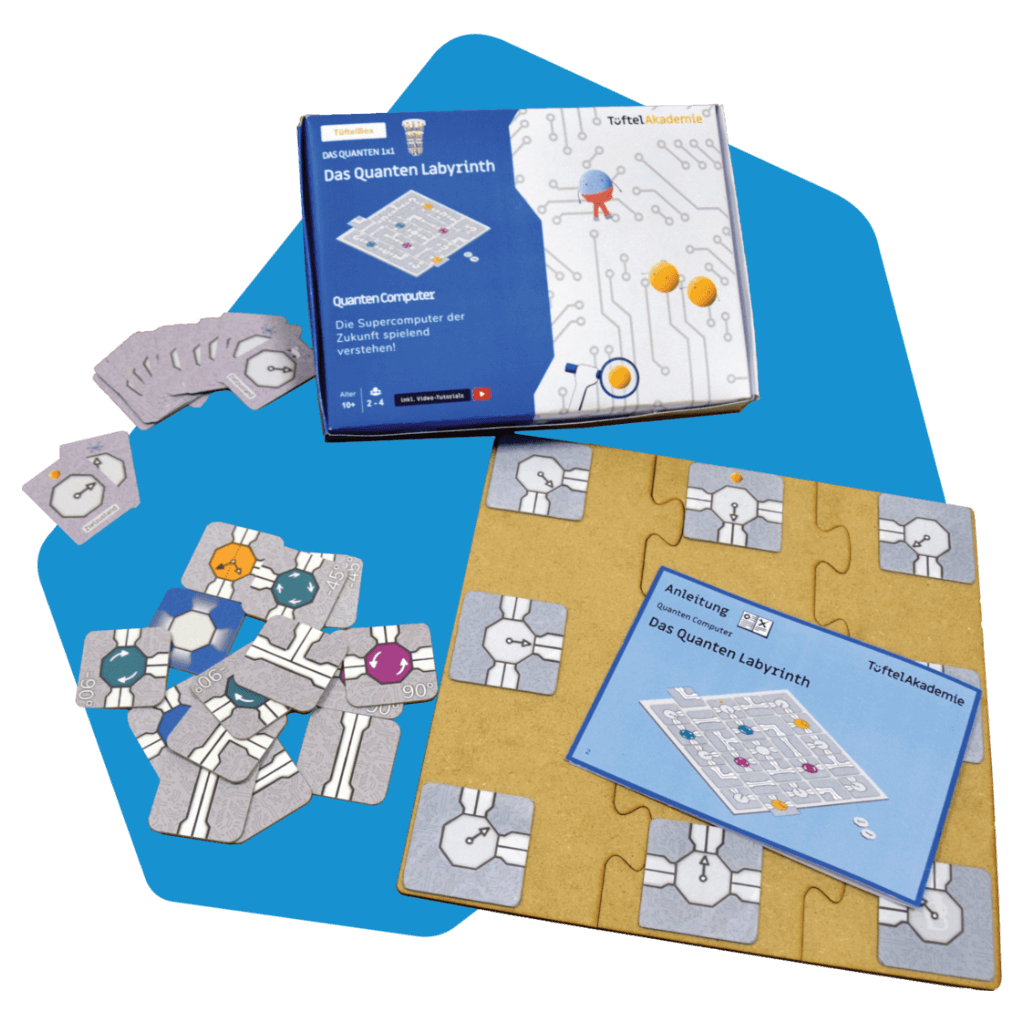
You need:
- 1 game board (3 parts)
- 4 game pieces/figures
- 21 playing cards
- 16 score cards
- game instruction
You can create all the materials yourself. You can find the files in the downloads.
All materials are licensed under a CC-BY-SA licence..

All materials are licensed under a CC-BY-SA-Licence.
material in english:
How to do it yourself:
Cut out the playing cards, game pieces and the score cards. Glue the target state cards on the game board. Tip: glue cards on a thin cardboard. And you’re ready to go!
Quantum 1×1 makes the most important insights of the quantum world easy to understand. With the help of easy-to-understand videos and the new tinkering boxes, you will gain a basic understanding of second-generation quantum technologies.
We visited over 20 quantum experts from different scientific fields. You can discover the conversations on the different topic pages!
Let’s start!
⏰ duration: ca. 90 -120 min
1. basic knowledge
How do normal computers work?
To understand how normal computers work, we need to look at their basic operation with bits. A bit is the smallest unit of information in a computer. It can take either the value 0 or 1. You can also imagine a light switch, which is either ON (1) or OFF (0).
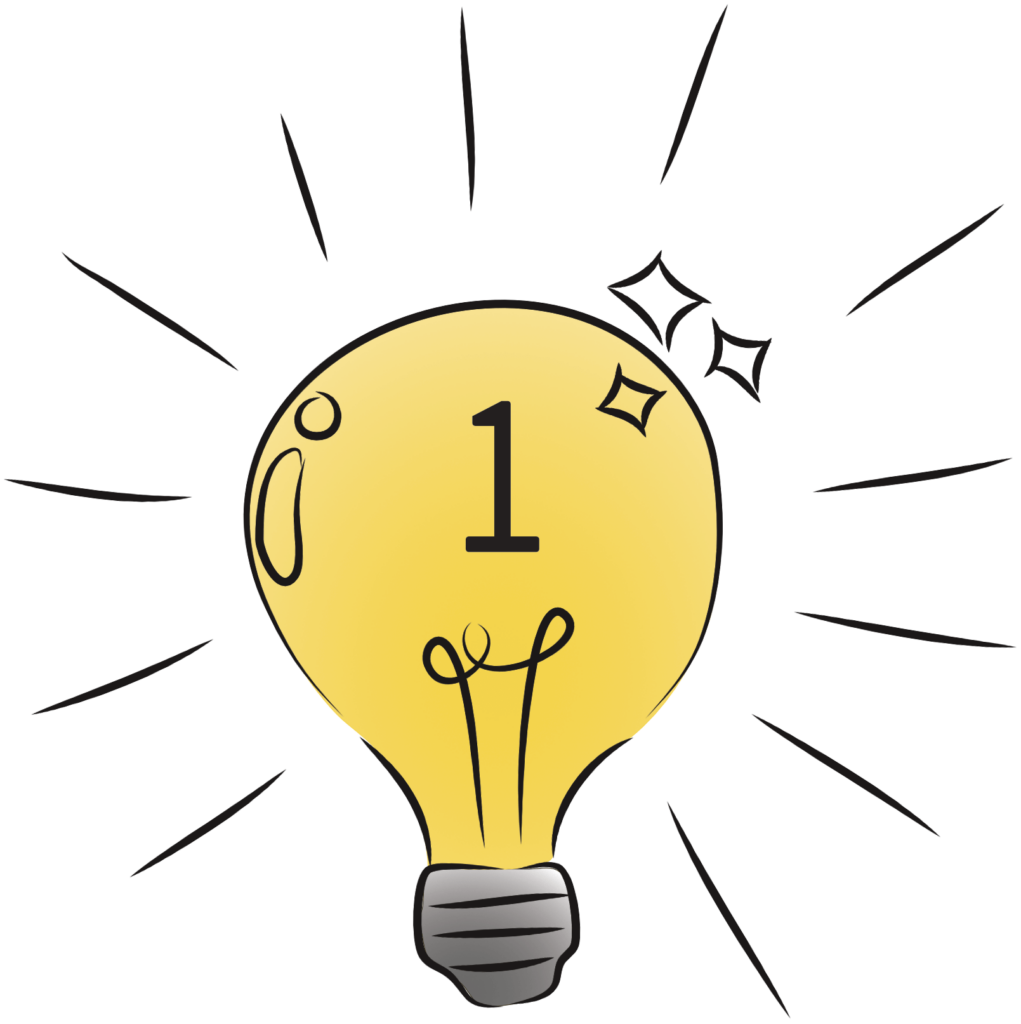
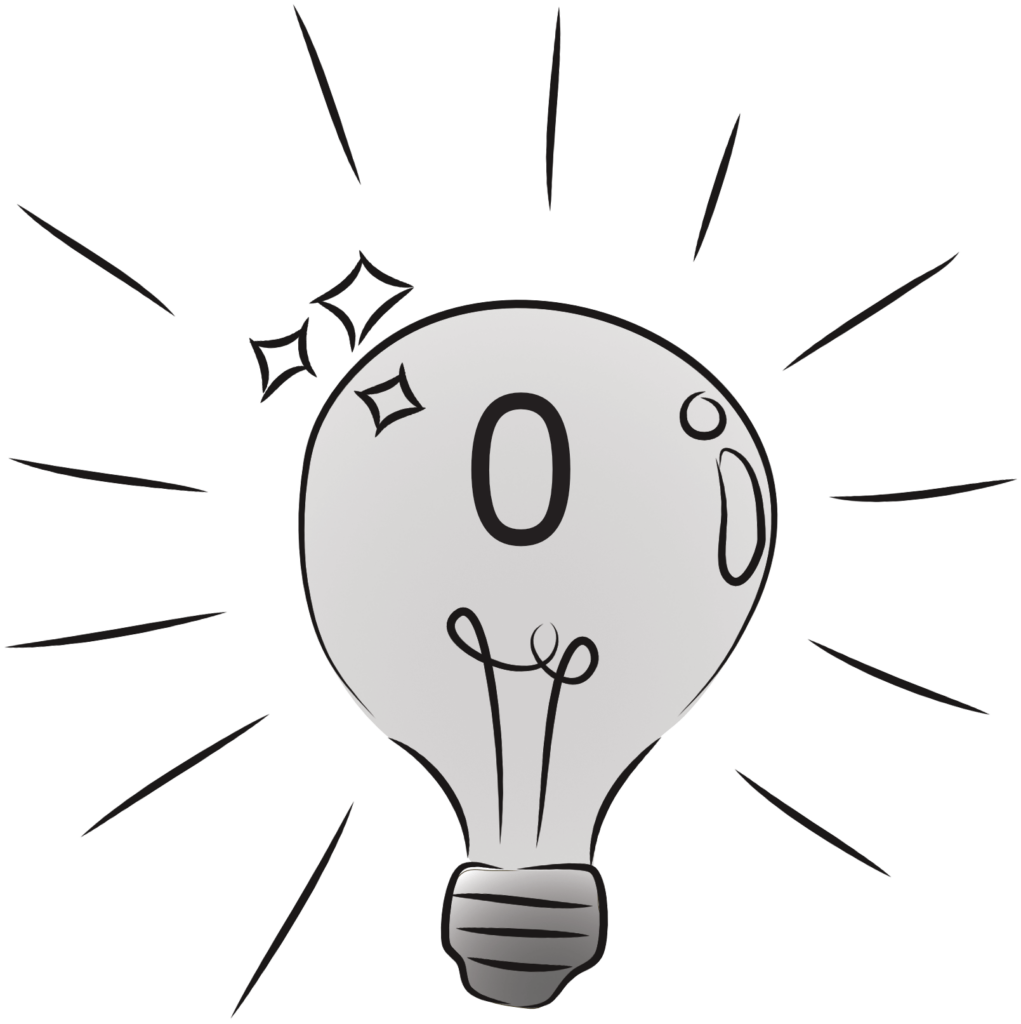
In order for the computer to behave the way we want it to, it must be programmed. The program is executed on the processor. The processor consists of many so-called logic gates, which process the bits mentioned at the beginning! With the programming we determine so to speak, when which gate is to be used.
An example for such a gate is the AND gate. It has two inputs and only if both are activated (1), the output signal is also activated (1).
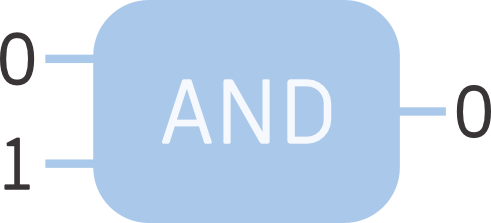
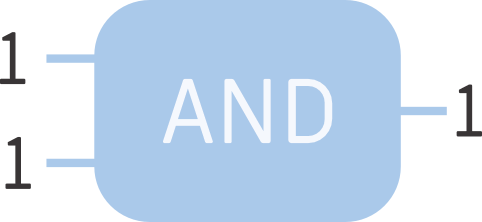
How does a quantum computer work?
For certain tasks, quantum computers are much faster than our computers today. It’s like an ICE train compared to a snail. So we could do very complicated calculations with quantum computers that would simply take far too long today. Large companies, research institutes and states are working flat out to make quantum computers usable.
But what are the benefits of quantum computers? They can solve super-complex tasks for which a „normal“ computer would need several thousand years. So we can solve problems of our modern society like simulations of molecules or system optimizations. In addition, they might be able to crack our current encryption in the future. At the same time, they hold the potential to make it secure once and for all. You can find out what this is all about in our other TüftelBox, the „Qey-Gen“.
Why a QuBit?
Quantum computers also work with bits, but they are a bit more complicated. Besides 0 and 1, they can also assume all possible states in between! So for example to 70% probability 0 and to 30% probability 1. These bits are then called QuBits – for QuantumBits – and the ability of this state is called „Superposition“.
Imagine we were playing pot banging. A normal computer would blindly hit somewhere with the hope of hitting the pot, just like a human being. By the feedbacks „cold“, „warm“, „very warm“ or „hot“ it learns how close it is to the pot. So the computer has to „test“ its way through its environment until it finds the right path. This can take a long time. With a quantum computer, you can imagine that it can strike with a spoon in several directions at the same time. For example, 70% to the left and 30% to the right. So it tries out all possible paths at the same time and finds the pot in no time at all.
quantum gates
To represent the state or „value“ of a QuBit, the so-called Bloch sphere is often used. So if you imagine that a normal computer can only use „straight down = 1“ or „straight up = 0“ on this sphere, a quantum computer uses all possible directions and mixed states in between. In our quantum maze, we simplify this Bloch sphere with a two-dimensional representation.

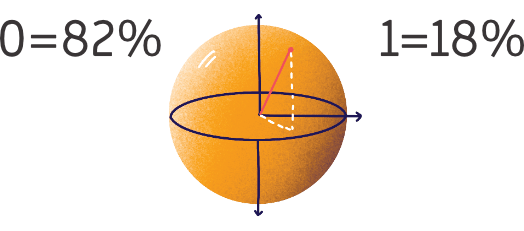
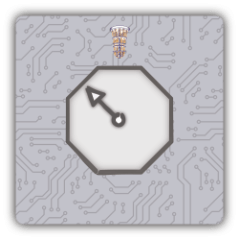
However, one QuBit alone does not make a quantum computer special. Only when many QuBits are entangled with each other can they be many times more powerful than a classical computer. This property is what scientists* call quantum superiority. It describes the ability of quantum computers to solve certain tasks in an acceptable time, for which a conventional computer would need several thousand years.
Quantum gates use the spin properties (arrow direction in the Bloch sphere) of the QuBits to perform computational operations. To change the „values“ of the QuBits, a quantum computer uses all kinds of quantum gates and algorithms. For example, there are gates that rotate or mirror the QuBits, just like in our quantum maze.
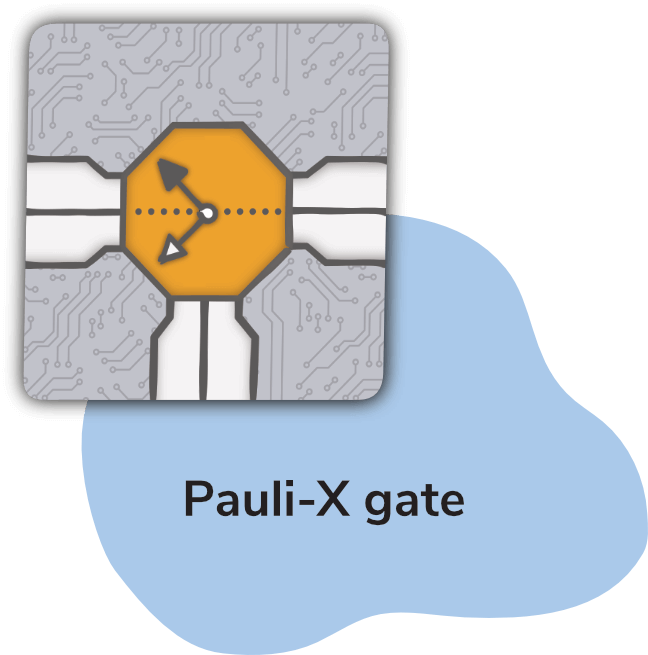
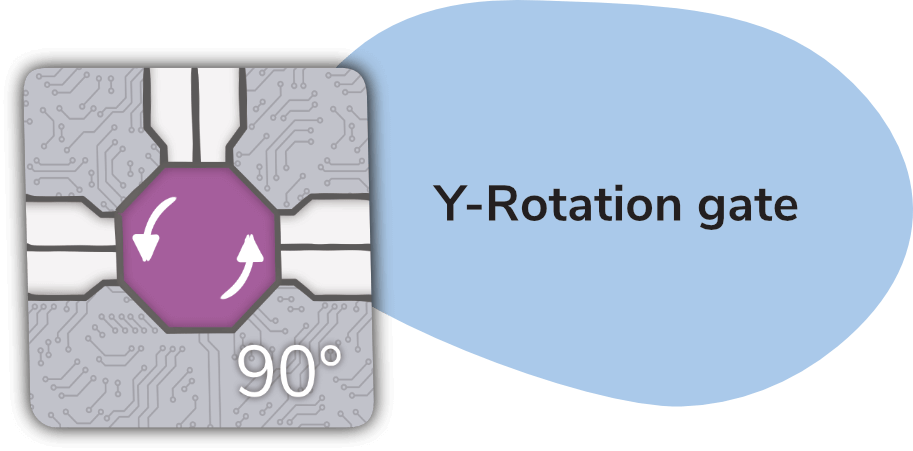
2. game setup
- First, assemble your game board by putting the three pieces together so that the notches fit into each other.
- Put the four special cards aside for now and play the Quantum labyrinth in the normal version. Later you can expand the game with the additional rules.
- Shuffle the 17 path/game cards and distribute them on the free spaces on your game board in such a way that a random labyrinth is created. You will be left with one card, which you can use later to move the labyrinth corridors.
- Shuffle the 16 score cards and place them face down in a pile next to the board.
- Each player chooses a piece and places it in the center of the labyrinth with the arrow pointing in a random direction.
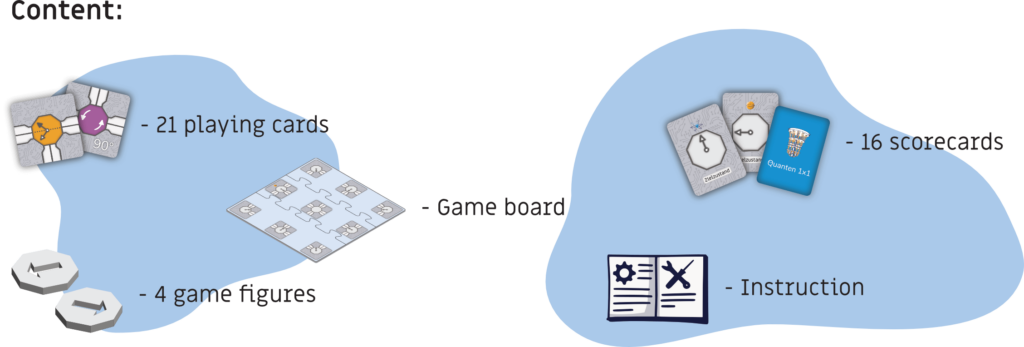
3. this is how the game works
At the beginning, each player draws a point card from the deck. The card shows the state that he or she wants to reach first on the playing field. „State“ means that your game piece (or your QuBit) wants to arrive at the corresponding playing field exactly in the rotation shown.
It is important to pay attention to how you hold the card. There is a small symbol on the score cards and the game board that symbolizes the top. Hold the score card so that it aligns with the orientation of the game board.
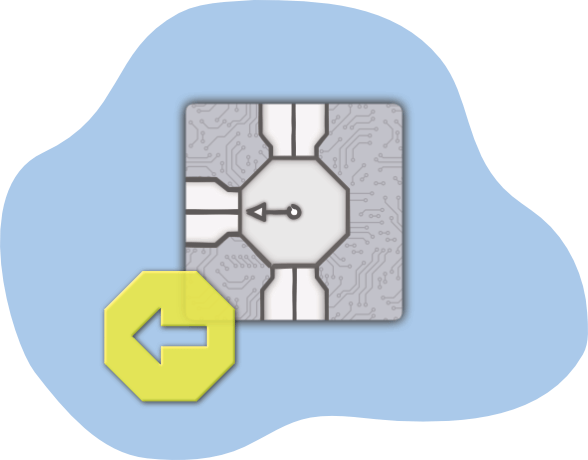
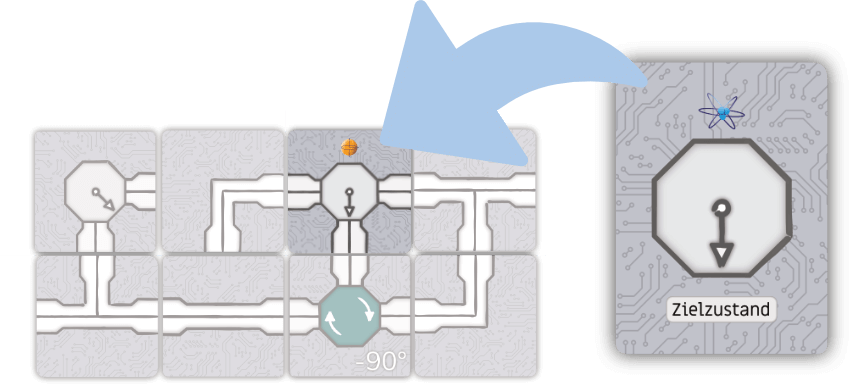
The youngest person starts the game. Then the game continues in a clockwise direction. A move always consists of two steps:
1) move aisles and 2) move game figure
Move aisles
To move the corridors, take the leftover path card and slide it into one of the movable places on the board. The path card pushed out on the other side will later serve the next person for their turn.
Important: Path cards may not be pushed back in exactly the same place where they were pushed out! As a reminder, it is best to leave the card right there after your turn. That way, the next person knows not to move that row back.
If a piece is pushed off the board when you move the corridors, it automatically lands on the opposite side, i.e. on the newly inserted path card.
Move game figure
After you have changed the corridors, you can now move your game piece. In principle, you may move to any square that is currently accessible through the corridors – regardless of whether it is a normal path square or a gate card, or whether another piece is already standing there.
Since you want to reach your target state in a certain rotation, look for the gate cards on the board that will help you get into this orientation (see gate cards p. 17)!
Attention: Within one turn you may use each gate at most once! It is therefore forbidden to run in circles several times in order to run over the same gate twice or three times. Of course, this does not apply to other gate cards on the board. For example, you can turn 45° to the left once, flip horizontally once, and then turn 90° to the right if you reach the corresponding gate cards during a turn.
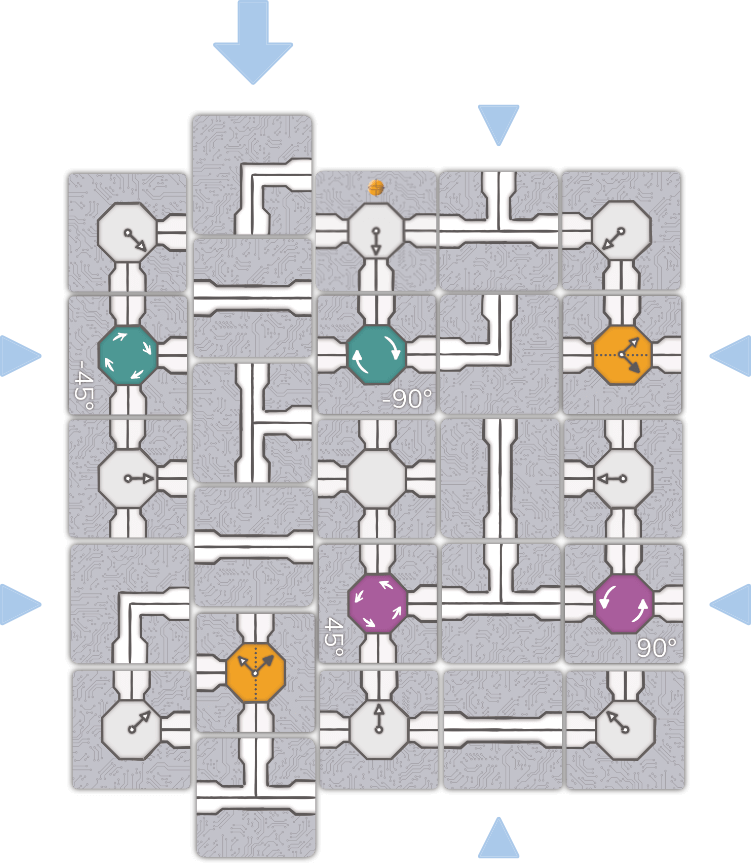
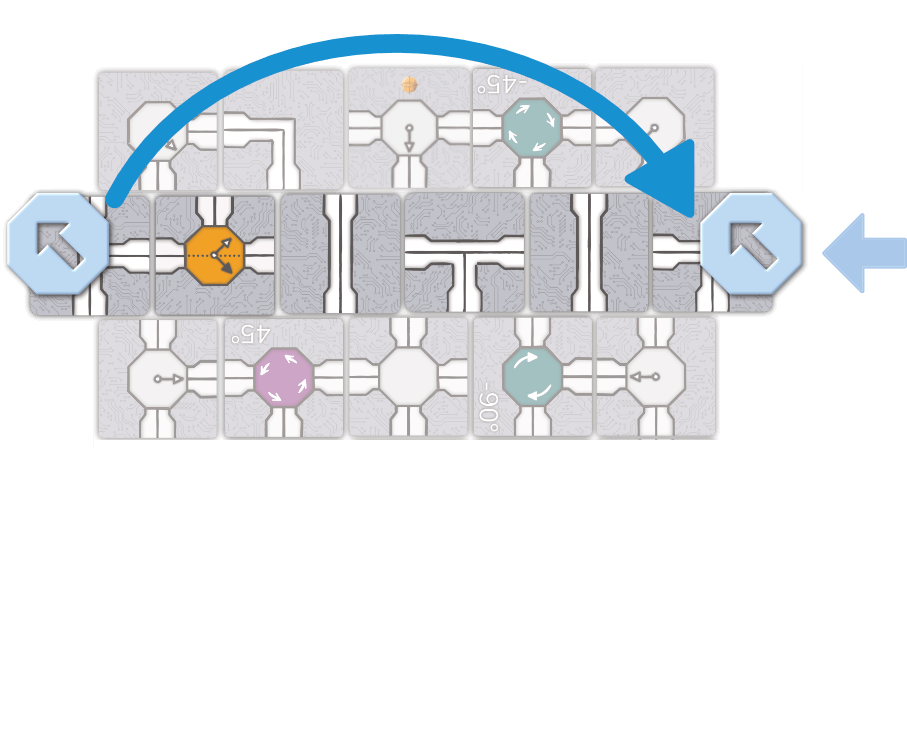

Reaching a target state and end of the game
When a player has reached the correct target state, he or she can put the score card aside and draw a new one. The turn is over and it is the next person’s turn.
The game is considered over when a player has reached the target state of his or her current score card and the pile of score cards is empty so that no new card can be drawn. Then it is counted who could collect the most point cards and thus reach the most states. This person has won!
Tip: If you want to play longer games, you can shuffle the achieved score cards back into the deck and write down the points separately on a sheet.
Additional rule: entanglement
You can still play the game with a special rule called „entanglement“. If you move your piece over another piece during your turn, you are entangled for the duration of that turn! This means that your*other player’s piece will also be affected by any gate you cross.
For example, if you cross a gate that rotates you 90° clockwise, the other player’s piece will also rotate! However, it stays on its playing field and does not „run with you“. After you have finished your turn, the interlocking is canceled.
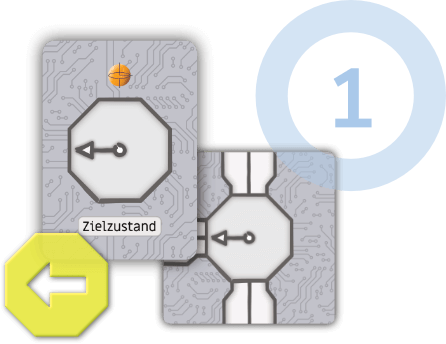
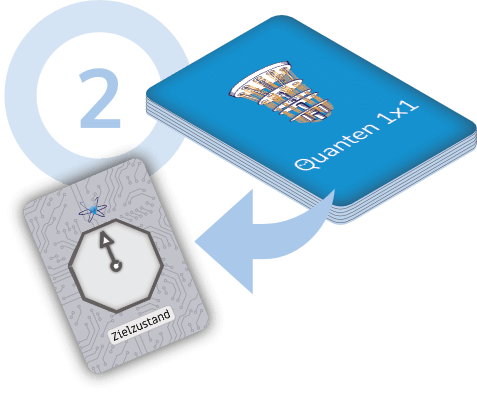
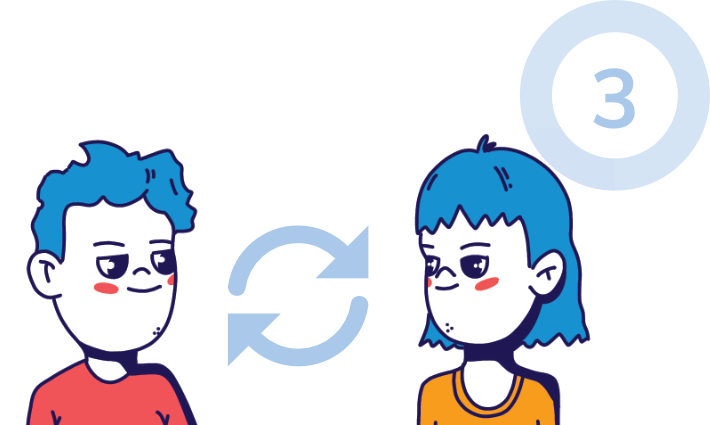
Meaning of the cards
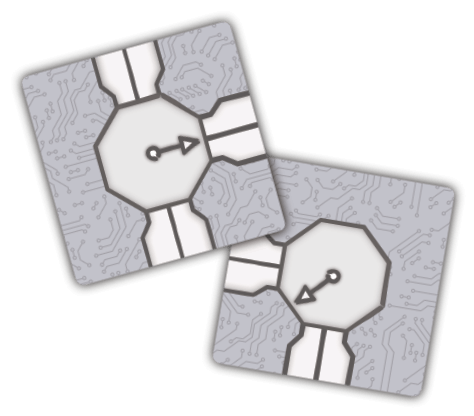
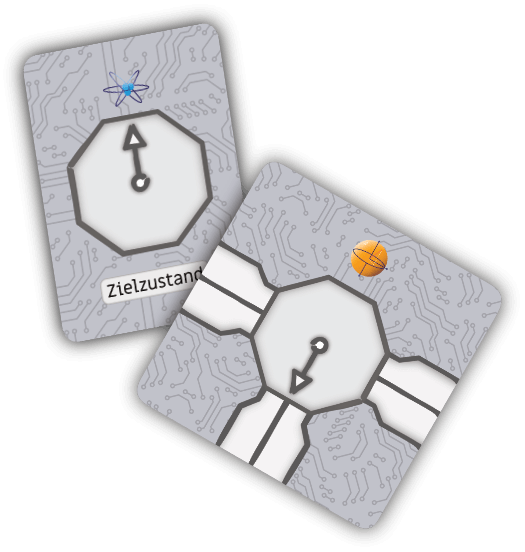
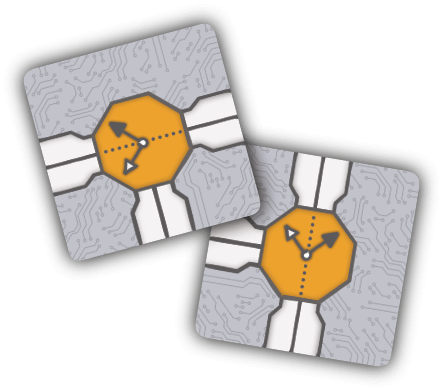
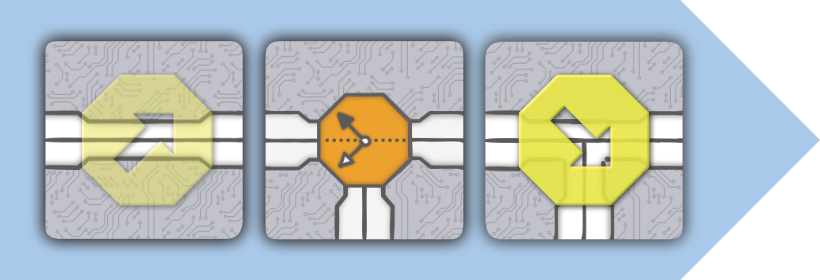
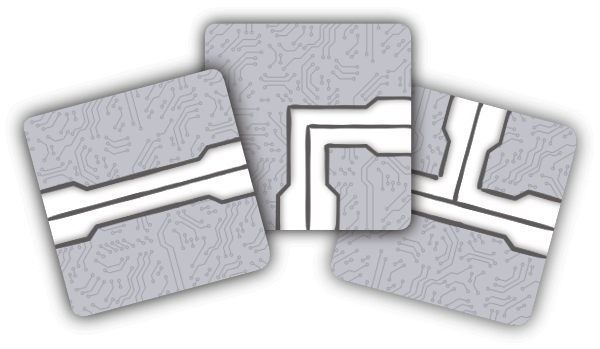
Path cards on the playing field
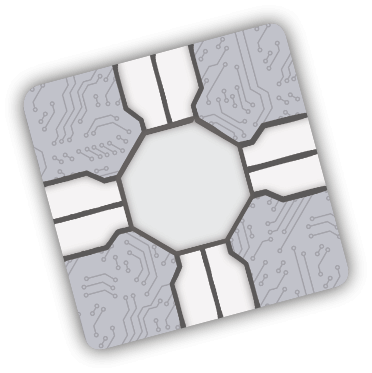
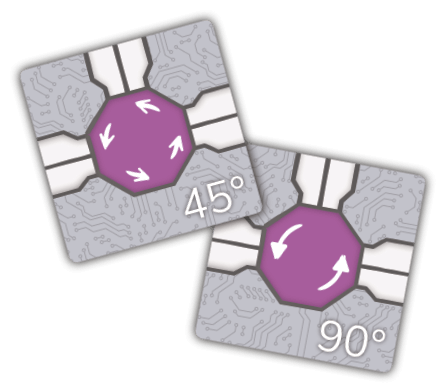
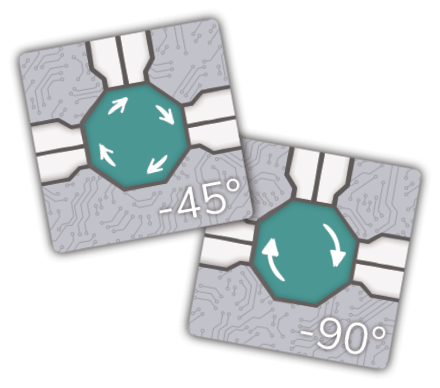
Quantum Labyrinth Plus
Can’t get enough of Quantum and feel ready for the next level in Quantum Maze? Then you can now add these special cards to the game.
Quantum tunneling: Quanta are so small that they can sometimes tunnel past barriers. Use the „Quantum tunneling“ effect to your advantage and teleport from this card to the same card with this symbol.
Quantum Tüftler Gate: You already know a lot about quanta and want to add your own rules to the game? Use this game card and draw your own quantum symbol on it. You have found a really good quantum rule and want to share it with everyone? Then post your card on Instagram @Tüfelakademie!
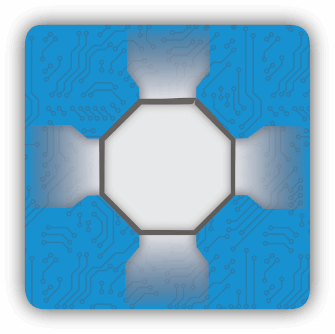

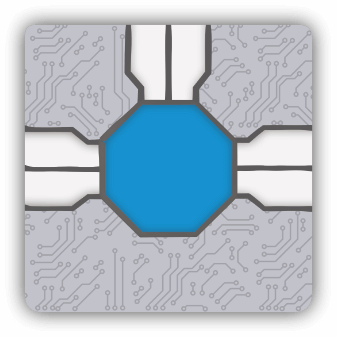
Want to know more?
Go ahead and check out our Quantum 1×1 and explore more projects, videos and interviews with experts on quantum technologies.